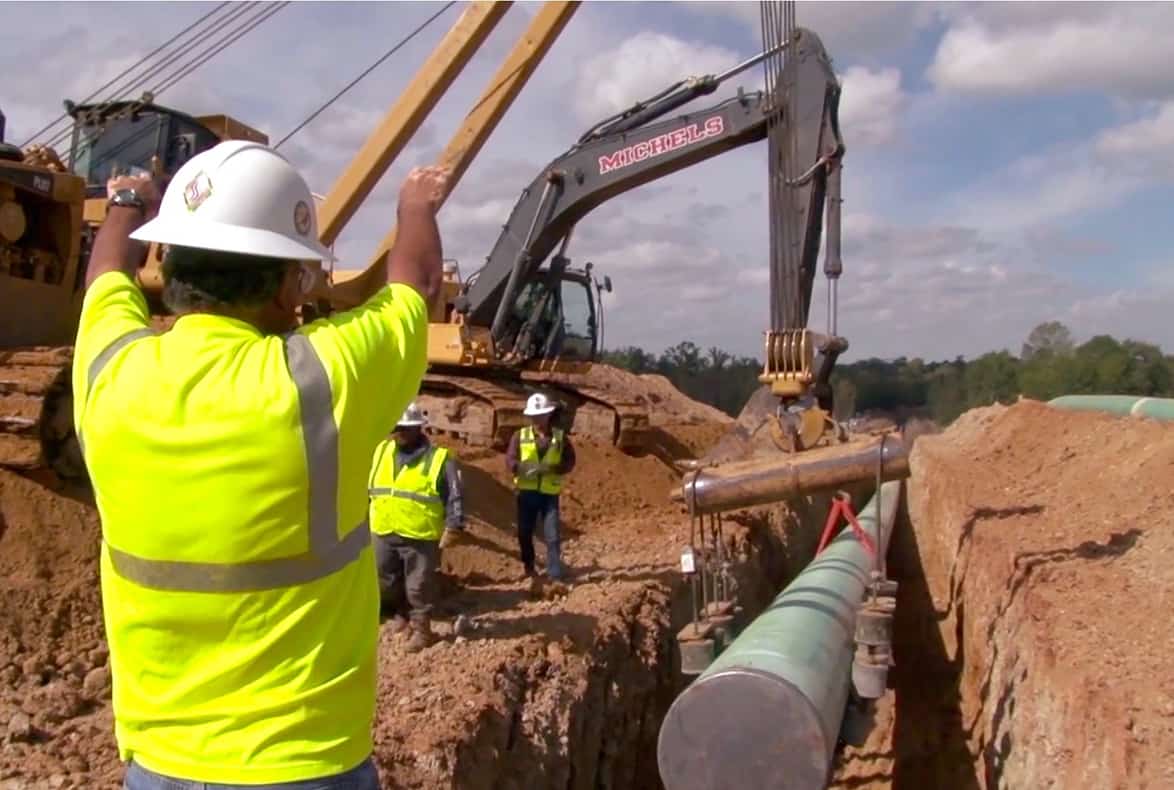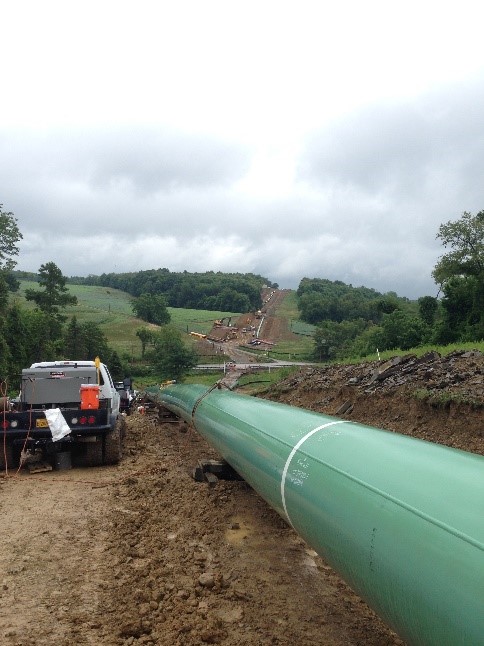Why More Contractors Recommend Creek Pipe Texas oilfield Projects
Wiki Article
A Deep Study Pipes Installation: Essential Factors and Considerations for Successful Projects
Effective pipe installation is a crucial aspect of engineering projects. It entails a series of factors, from product option to exact sizing and style. Each decision can significantly impact the system's efficiency and longevity. Understanding these parts is crucial for staying clear of expensive errors. Creek Pipe HDPE installation. As teams navigate via the intricacies of installation, several essential considerations arise that warrant interest. What are the pivotal components that can make or break a piping project?Recognizing Pipe Materials and Their Applications
When selecting pipe products, one should consider the details applications and ecological conditions they will certainly deal with. Various materials offer distinctive properties that accommodate various demands. PVC is light-weight and resistant to corrosion, making it excellent for water distribution systems. Conversely, steel pipelines provide toughness and longevity, ideal for high-pressure applications however might require safety coverings to stop rust.Copper pipes are preferred for pipes because of their antimicrobial properties and simplicity of installation, while polyethylene is frequently utilized in below ground applications due to its versatility and resistance to cracking.The selection of material likewise pivots on temperature extremes, chemical direct exposure, and installation location. For high-temperature applications, materials like CPVC or PEX can be helpful. Inevitably, understanding the attributes and limitations of each product help in making notified choices that boost system efficiency and longevity.Value of Correct Sizing and Design
Proper sizing and style of pipelines are critical for guaranteeing suitable circulation prices and minimizing pressure loss. These aspects additionally play a substantial role in determining the compatibility of materials used in the installation. A methodical technique to sizing and style can substantially boost the performance and long life of a piping system.Influence On Circulation Rates
Flow rates in piping systems are critically influenced by the sizing and design of the pipes. Effectively sized pipes guarantee that the fluid can move efficiently, reducing turbulence and optimizing circulation capability. Large pipes can lead to lowered circulation speeds, while undersized pipelines might limit flow, resulting in increased rubbing and possible obstructions. The design must additionally take into consideration aspects such as pipe material, internal surface area smoothness, and layout, as these add to the general efficiency of fluid transportation. Furthermore, the arrangement of installations and connections within the system can impact circulation rates. Consequently, careful interest to pipe sizing and design is crucial for enhancing flow efficiency in any piping installation task.Pressure Loss Factors To Consider

Just how can pressure loss considerably affect the effectiveness of a piping system? Stress loss is a vital variable that can significantly lessen the performance of fluid transportation systems. When pipelines are improperly sized or developed, too much pressure loss may happen, leading to reduced circulation prices and increased energy intake. This inadequacy can lead to greater functional prices and potential system failures. Correct sizing and design are vital to decrease pressure loss, guaranteeing that fluid characteristics continue to be ideal throughout the system. Engineers need to meticulously consider elements such as pipe size, size, and product to attain an effective equilibrium. Eventually, resolving stress loss during the design phase can enhance reliability and longevity, making it important for effective piping tasks.
Product Compatibility Variables
Stress loss is not the only factor that can impact the performance of a piping system; material compatibility also plays a significant role in overall efficiency. Guaranteeing that the materials used in a piping system work with the fluids they will transport is important. Different products can respond negatively to different chemicals, resulting in rust, deterioration, or contamination. This can eventually compromise the integrity of the system and influence its durability. Furthermore, proper sizing and design are important to suit thermal growth and contraction, which can further affect product efficiency. Assessing factors such as temperature level, stress, and chemical structure is vital in selecting appropriate products, consequently improving system reliability and lowering maintenance costs in the long-term.Techniques for Accurate Pipe Installation
Precise pipe installation is essential for ensuring system performance and longevity. A number of techniques can boost the accuracy of this process. Mindful dimension is important; installers ought to utilize top quality devices such as laser degrees and tape measures to identify the precise sizes and angles needed. Next off, correct pipe reducing strategies, like using a pipe cutter instead of a hacksaw, guarantee clean edges that help with much better connections. Furthermore, the usage of placement devices, such as pipe jigs, can notably improve accuracy throughout setting up. It is additionally suggested to take right into account thermal expansion; allowing for adequate spacing and expansion joints can prevent future misalignments. Finally, the installation team need to adhere to supplier standards to stick to certain referrals associated with each pipe kind. By applying these strategies, the chance of leakages and system failures decreases, inevitably adding to a much more trustworthy piping system.Making Certain Pipe Positioning and Support
Correct placement and support are important to the integrity and efficiency of any type of piping system. Misalignment can lead to raised anxiety on joints, potential leakages, and minimized effectiveness. To guarantee correct positioning, it is necessary to utilize ideal tools such as laser degrees and positioning evaluates. These tools assist attain accurate positioning, assuring that pipes are mounted in conformity with design specifications.Support systems need to be developed to suit thermal expansion and tightening, as well as the weight of the pipelines and their contents. Choosing the right kind of assistances, wall mounts, and braces is necessary. Each ought to be mounted at specified periods to stop drooping or excessive tension on the pipelines. Regular assessments following installation can assist recognize any misalignments or indications of poor support. By focusing on placement and support, one can considerably boost the resilience and capability of the piping system.Common Installation Errors to Stay Clear Of

Checking and Assessment for Quality Control
The installation process might appear complete, thorough screening and assessment are important to guaranteeing the long-term integrity of a piping system. Numerous techniques are employed to analyze the stability of the installation, including stress examinations, visual examinations, and non-destructive testing (NDT) techniques. Stress tests validate that the system can stand up to operational problems without leakages, while visual examinations assist identify any type of visible issues in the pipes or joints. NDT methods, such as ultrasonic or radiographic screening, offer understandings into the product stability without compromising the system.Additionally, recording the testing results is crucial for future recommendation and compliance with sector standards. This documents serves not just as a high quality guarantee step yet likewise as a lawful protect. Inevitably, an extensive screening and assessment method adds to the general safety and performance of the piping system, ensuring it fulfills the required performance criteria in time.Upkeep Tips for Resilient Pipe Systems
Preserving a pipeline system requires normal evaluations and monitoring to determine possible issues prior to they escalate. Executing reliable cleansing techniques is likewise essential for preventing accumulation that can prevent performance. Together, these methods add to the long life and integrity of the piping infrastructure.Routine Examinations and Monitoring
Regular evaluations and tracking are necessary for making certain the longevity and efficiency of pipe systems. Regular evaluations can assist determine possible issues such as leaks, rust, or clogs prior to they rise into significant problems. Executing a routine for routine evaluations enables for the very early discovery of deterioration, allowing prompt repair services. Surveillance stress degrees and circulation prices can additionally provide valuable insights right into system efficiency, making sure that any type of anomalies are attended to quickly. Additionally, using innovative innovations, such as infrared video cameras or ultrasonic testing, can boost the examination procedure by offering comprehensive information concerning pipe conditions. Ultimately, consistent surveillance and assessments add to the integrity and toughness of pipe systems, decreasing the risk of pricey repair work and downtime.
Efficient Cleaning Up Techniques
Reliable cleansing techniques are essential for keeping the stability and functionality of pipe systems. Regularly set up upkeep, such as flushing systems with water, helps remove particles and buildup. For even more stubborn blockages, specialists typically recommend hydro jetting, which utilizes high-pressure Creek Pipe near me water to clean pipe insides completely. Chemical cleansers can likewise be utilized however should be picked thoroughly to stay clear of harmful pipelines. Furthermore, using tools like pipe electronic cameras can assist in recognizing issue locations and guaranteeing reliable cleaning. Keeping proper drain and avoiding the disposal of dangerous substances down pipes better add to long life. Overall, constant cleansing practices not only boost performance however additionally reduce the danger of pricey repair work in the future.Often Asked Inquiries
What Are the Labor Costs Connected With Pipe Installation Projects?
Labor prices for pipe installation tasks vary commonly, affected by variables like project complexity, regional wage prices, and called for skills (Creek Pipe reviews). Commonly, these costs can range from $50 to $100 per hour, depending on the workforce includedJust How Do Neighborhood Rules Affect Pipe Installation Practices?
Local regulations significantly influence pipe installation methods by developing safety and security standards, material specifications, and installation methods. Compliance with these policies assurances job security, environmental management, and adherence to neighborhood codes, inevitably affecting general job success and prices.What Devices Are Essential for Pipe Installation?
Important tools for pipe installation include pipe wrenches, cutters, and installations. In addition, sealers, determining tapes, and levels ensure accuracy and resilience. Proper equipment advertises performance and adherence to security requirements during the installation process.Just How Can Climate Issues Impact the Installation Process?
Climate problems considerably impact the installation procedure, as severe temperatures, rainfall, or wind can impact material integrity, employee security, and job timelines. Proper preparation and scheduling are vital to minimize these prospective challenges throughout installation.Are There Warranties for Mounted Pipe Solutions?
Warranties for mounted pipe systems typically vary by supplier and installation service provider. Usually, they cover problems and handiwork for a given period, ensuring the system's dependability and offering comfort to the homeowner.Report this wiki page